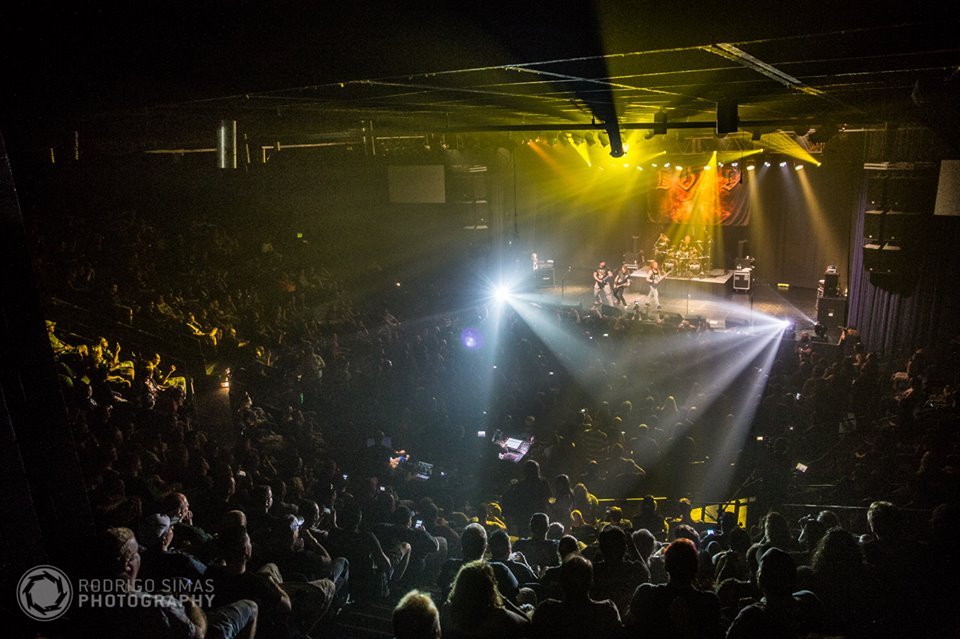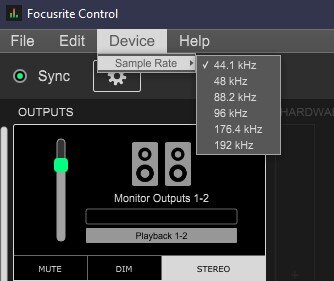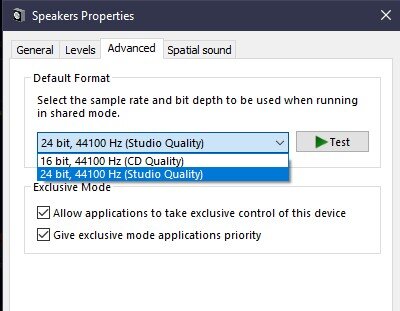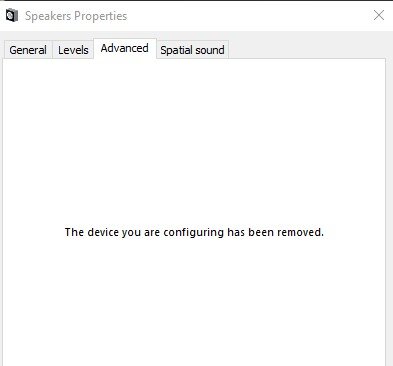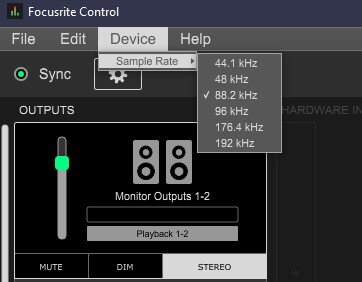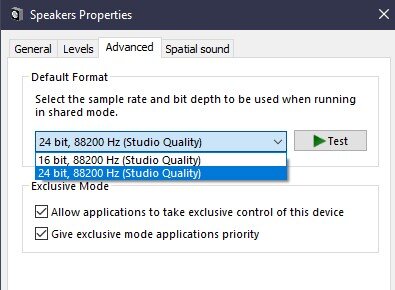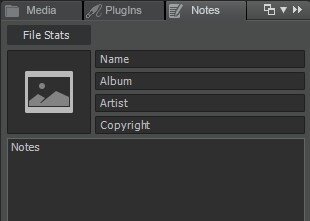-
Posts
2,816 -
Joined
-
Last visited
-
Days Won
8
Everything posted by Lord Tim
-

recording with Autotune and input monitoring
Lord Tim replied to Jordi's topic in Cakewalk by BandLab
Glad it was all sorted out Weird that the MOTU was stuck at 16 bits, but I guess it is very Mac-centric. One of the reasons I did my post (besides trying to help) was that a lot of people read these threads looking for solutions to their problems, and it's easy to miss the really great and helpful replies that people have done in all the confusion. I wanted to get it all straight for anyone who has run into the same problems or wants to do the same technique. -

recording with Autotune and input monitoring
Lord Tim replied to Jordi's topic in Cakewalk by BandLab
Yeah, the big problem with this thread is there's 2 entirely different conversations going on that are being conflated, making each one of the solutions seem like they're mixed in together somehow. There's been some very informative and great suggestions in the thread but if taken out of context, those solutions are just making things more confusing. Problem 1: The OP wants to record vocals through Autotune with no latency. Problem 2: His interface is somehow stuck at 16 bits. Let's address Problem 2 first: Cakewalk is using an ASIO driver to get the sound into it. It's separate to Windows audio (Windows doesn't use ASIO), but as was mentioned, it's generally a good idea to have the sample rate the same for both the ASIO driver and Windows audio if you're using the same device for both things. This is usually set in your audio interface control panel software. For example. in my Focusrite control panel, if I change from 44100 to 88200 as the sample rate, the Windows audio settings will give me different options as to what I can select. Here is my control panel with 44100 set for the sample rate: And this is what Windows says is available to the device: But if I change my Focusrite to 88200, as seen here: ... the first thing that happens is Windows does this: ... and then once I do check the properties of the device in Windows again, I see these options: Why am I telling you this? Like was mentioned in the thread and in my post, your need to have your interface installed correctly first, with the correct manufacturer's supplied drivers, and you do your initial settings inside your audio interface's control panel. If you haven't got your MOTU's control panel software installed, do that first, and look for the setting in there. This should change over any Windows settings automatically, but as was suggested, it's a good idea to have your Windows audio match your MOTU's settings just to be extra safe, to avoid any possible mismatches. What you're seeing in that Windows speaker properties stuff really has no bearing on what's coming into Cakewalk at all, it's an ENTIRELY different driver and different audio path, but in the weird case that some other application is using your audio device, having them match can stop some issues. Unlikely if you're just recording a vocal track with nothing else playing, however, but it's still generally a good idea. The key takeaway here is that your MUST have your proper MOTU drivers and control panel software that you downloaded from the MOTU site installed first. It's always a good idea to check back to see if there's any updates to the software too, so you have the latest drivers, control panel and firmware installed. If you're unable to switch out of 16 bits, this is a good place to start looking to fix it. This all has nothing to do with the question asked in the first post, however. So going back to Problem 1 ("Is there a way to configure Cakewalk to be able to record a vocal track, using autotune in real time with no latency via input monitoring?"): This was answered in the thread, but I'll repeat it here: yes and no. If you insert your Autotune effect into the track's FX Bin and record, you won't hear it live unless you click the Input Echo button (the one next to the Record Arm button) as seen here: (I'm using Graillon as my Autotune effect in this example, but this works for any effect in the bin) This will NOT record the effect, it'll only stream the audio through it as it records. Additionally, you may hear your input (mic) audio playing along with it because your interface is likely playing what it hears too. You need to turn off any direct monitoring or mute any channels in your MOTU control panel so the ONLY thing you're hearing is coming through this track with Input Echo enabled. What you'll actually record is the raw voice, but when the track is played back, it'll be playing through the effect so you'll hear it doing the tuning. If you want to apply that effect to the track, go to Process > Apply Effect > Audio Effects. If you want to record this in real time, you need to set up an Aux track, like in this example: So you would set up Track 1 as your input coming from your microphone and insert the Autotune effect in the FX Bin of that track. Then set the output of Track 1 to go to a new Aux track (Aux 1 in this example). And then you would record Aux 1. That will allow it to record the effect live. It's a bit of a workaround and it would be nice to have a "record FX in place" option where the signal flow is altered to come in after the FX Bin, but that's for a different discussion thread. Hopefully that actually gets to the question itself and answers it. -

recording with Autotune and input monitoring
Lord Tim replied to Jordi's topic in Cakewalk by BandLab
Fair call about the sample rate, Focusrite does swap this automatically though. My point I was making though was this kind of went off on some tangent somewhere that wasn't really related to recording a live effect inside Cakewalk, rather than making sure the drivers were correctly installed and input monitoring was set up. It's like not being able to start your car and rather than asking if someone has the key in the ignition, it turns into a discussion about different fuel types - which can be very important - but is really muddying the waters with getting the task done. -

recording with Autotune and input monitoring
Lord Tim replied to Jordi's topic in Cakewalk by BandLab
So I see in this thread. But it's actually not the case, unless you're trying to use some other software that plays audio at the same time as you're using Cakewalk, which I assume you're not. If you're recording vocals, why would you be? All of that stuff is an entirely different conversation to what you're trying to do. As I said in my first post in the thread, so long as you have your interface's ASIO drivers installed properly, selected in Cakewalk in Preferences, and you've set your latency as low as it'll allow you to go and you've disabled any direct monitoring in your interface's control panel, then all you need to do is click the Input Echo on the track you're recording on to hear the autotune effect. That's it. If you want to record the track with the effect on it, you do need to route it to an Aux track or something like that and record that Aux track, because you can't record live effects to a track directly, but you can still apply those effects after the recording is done. But all of the sample rate stuff, live effects, etc. are all done entirely inside Cakewalk and doesn't really have much to do with Windows sound settings. -

recording with Autotune and input monitoring
Lord Tim replied to Jordi's topic in Cakewalk by BandLab
How are you using Autotune outside of Cakewalk so that the Windows sample rate even comes into play? Cakewalk will force the interface to conform to its preferred settings in Preferences, independently to Windows. If you're recording live audio within Cakewalk, why does it even matter that system audio - which ISN'T ASIO - is set to something else? Unless you're actively switching to something else while you're recording, which is generally a bad idea anyway, how is it even coming into play? -

recording with Autotune and input monitoring
Lord Tim replied to Jordi's topic in Cakewalk by BandLab
I've read this thread like 3 times now and I can't for the life of me work out why we're messing around with Windows sound panel sample rates. Windows DOES NOT use ASIO. The whole point of ASIO is a direct driver access to your audio device, bypassing the Windows audio subsystem. If we were talking WASAPI or WDM, sure, but ASIO is its own thing. Just because Windows can use your device doesn't mean it's using ASIO. For example, my Focusrite 18i20 plays fine with Windows, but it is a different driver to what Cakewalk is using, despite it being the same device. This said, you *can* get conflicts if you try to run other apps at different sample rates at the same time as Cakewalk. But we're not, so it's actually quite irrelevant as to what Windows is set to with the sample rate, etc. John is on the money with saying the ASIO driver and software isn't installed correctly, or set up correctly inside Cakewalk. Everything else is making everything much harder for no reason. Set your latency to its lowest workable setting in the MOTU control panel and that should set it in Cakewalk too, so long as you're using ASIO as the driver model. Then set up your track you want to record on, put the auto tune plugin in the FX bin on there, and turn on Input Echo. If your latency is low enough, you should hear no noticeable delay. Make sure that if you have any direct monitoring in the MOTU, you want to turn that off so you're ONLY hearing the Cakewalk audio that's echoing the selected track. Note: This won't record the effect, it's playing back live. You would either do Process > Apply Audio Effects after you're done recording, or you can set up the output from this track to go to an Aux track, which you could record in realtime. -
I just play super quick and let the glow from the heat generated by my fretting hand light up the room. ... or just do like Mark said.
-
I don't particularly find the engine overly inefficient myself, but having something like ASIO Guard would be very welcome for sure, and it's been on my wishlist for quite a while now.
-
No, no Cakewalk products can be installed to iPad. Going forward, Cakewalk Sonar is a Windows-only application, like Cakewalk by Bandlab currently is, and SONAR Platinum was before it. Cakewalk Next will be Windows and Mac. What you're probably seeing is people saying the Bandlab editor app is for iOS, browser based, etc. - this is unrelated to these Cakewalk products, although it's owned by the same company, Bandlab.
-

Old VST2 plugin causes Cakewalk by Bandlab not to close down entirely.
Lord Tim replied to Geert Jonkheer's question in Q&A
Just for anyone reading the OP in this bumped necrothread, just to clarify - this forum isn't a staff support forum, it's a peer-to-peer forum primarily, meaning most of us who post here are just regular users. Often there'll be a lot of regular users who have huge amounts of knowledge on both Cakewalk products and computer recording in general though, so it's a super valuable resource - I've learned so much just from lurking here myself. The staff do sometimes post and they do often read threads and try to help when they're not tied up working themselves, but if anyone is after any proper support, you can try the support center: https://help.cakewalk.com/hc/en-us or e-mail support@cakewalk.com or you can check out some of the super useful FAQ sections: https://discuss.cakewalk.com/index.php?/forum/26-frequently-asked-questions/ Just bear in mind that if you do have a specific problem, it's best not to post in there, but to start your own thread in the main forum. The Reference Guide is another great place to get familiar with: https://bandlab.github.io/cakewalk/docs/Cakewalk Reference Guide.pdf -

How Will The Forum Handle Cakewalk Next & Sonar Products?
Lord Tim replied to Jim Fogle's topic in Feedback Loop
Yeah, I have to agree about Q&A - the idea is good in principle but the default view makes it hard to see what's posted last, not everyone uses the rating or the upvote feature, and the main forum gets more traffic and usually more answers anyway. There's always going to be people who post in the wrong sections though, like asking specific questions about a plugin in a product release section thread for example, but I think so long as both main products get their own forum, it'll at least help directing traffic that way and make the mods life a little easier if there's clear places threads should go rather than "well maybe the CbB forum, maybe Q&A, maybe Instruments and Effects....." -
Yeah this: The scan log will definitely shed some light on what's going on.
-
Yeah, I think negative measures are a really good idea, if for nothing else to add pick up measures so that notation starts on the correct measure.
-
I'd also suggest this is a good idea in general just in case you have any attack to a note that comes in a fraction before recording starts (eg: the first attack of the pick on strings when you're playing a guitar part).
-
There definitely is an issue with the keyboard shortcuts page in preferences. It seems like it's enumerating things each time, and in fact, if you close your preferences while you're still on that page, it'll take ages to open preferences again because it'll start this process again when it sees this page, so it's a good idea to switch to something else after editing your keyboard shortcuts before you OK out of your preferences. I've reported this one in the past, so I'd say it's in the system somewhere. EDIT: That said, 15 seconds is a bit much, it shouldn't be anywhere near that much. Considering you said you lost CTRL+S in another thread, this is sounding a little bit suspicious to me, like your KBN keyboard shortcut file has gotten corrupted somehow.
-
Yeah, CTRL+S has been default for save since the CWP days and has never changed in any version I've ever used.
-
I'm still hoping for a Symbian OS version
-
If you fill in the Notes tab in the Browser, all of the names will copy over to the ID3 tags and filenames when you export to MP3:
-

MIDI latency problem, ... but in just one project?!
Lord Tim replied to A Tolerable Quietude's topic in Cakewalk by BandLab
^^ Great tips, and I do this as well. -

MIDI latency problem, ... but in just one project?!
Lord Tim replied to A Tolerable Quietude's topic in Cakewalk by BandLab
I tend to do something along those lines, but it's rare that I keep tracking once the mastering effects are on - it's purely mixing into the mastering chain so latency doesn't really come into play. On the rare occasions that I think "Ah crap, forgot a synth part" I'll go through and disable any effects that introduce latency until it's fine and back at the mix stage again. -

Lost project files after updating - .dmp>.cwp conversion?
Lord Tim replied to Simple Verse's topic in Cakewalk by BandLab
There's no way an update has lost any files, it just doesn't work like that. In fact, even if you uninstall Cakewalk entirely, it doesn't touch your user files at all, and that's by design. There's a whole knowledge base article about doing a clean install in the case of some serious problems and even that doesn't delete user files unless you specifically manually do that. There's got to be something else at play here.- 6 replies
-
- dmp files
- dump fiels
-
(and 1 more)
Tagged with:
-
OK, let's do a hypothetical: You run a small bakery with a small team of bakers. You make pies for your village. You make 3 kinds of pies, beef pies, pork pies and gourmet escargot pies. This business pays your rent, your staff, and puts food on your table. Luckily business is good. The pies you sell most of are the beef and pork pies. They're not your favourites because they're quite fatty and you don't care much for the flavour but the townsfolk love them for some weird reason. You believe your escargot pies are superior in every way to the other pies. You have one guy who comes in every 2 weeks to buy one of these pies and you talk for hours about how everyone else just doesn't get it and they're totally missing out. One day you decide to take a stand to make people see what they're missing. You move all of your focus onto making these escargot pies. Your one guy who loves them as much as you is overjoyed. The rest of your customers are disappointed by this decision and go to the pie shop down the road to have their beef and pork pies since you're no longer putting in the effort to make the thing they liked from you. You know one day that people will eventually come around and realise how crap those beef and pork pies are. They'll see! One day! The young people will eventually get sick of that stuff and abandon ship and see how much better your escargot pies are! You just wait! In the meantime, you can't pay rent, any of your staff, and have to reluctantly close your bakery because your now dramatically smaller customer base has gone elsewhere. Those other guys may be on a sinking ship in your opinion but they still have their lights on and their doors open. It's a commercial product. The Bakers need to be paid. They can't do that with "one day..."
-
I wonder if this is a Windows permissions thing? I've never come across this myself over all the time I've ever user any version of Cakewalk / SONAR, etc. OK, try this then: Close Cakewalk. Go to Start and type CMD and run it as Administrator. In the Command Prompt window, copy and paste this and press enter: CD C:\Program Files\cakewalk\Shared MIDI Plugins Then copy these one by one and press enter after each: regsvr32 Arpeggiator.dll regsvr32 ChordAnalyzer.dll regsvr32 EchoDelay.dll regsvr32 EventFilter.dll regsvr32 Quantize.dll regsvr32 Transpose.dll regsvr32 Velocity.dll What this is doing is manually registering them with Windows. If you didn't get any errors doing this, great - start Cakewalk and see if they work then. If not, it's possible you may need to update your Microsoft Redistributables:
-
Not to mention Linux is also better without naysayers that use ProTools, Cubase, Studio One, Logic... Cakewalk by Bandlab and Cakewalk Sonar going forward is a Windows application. Rewriting this for Mac was impractical, so rewriting it for Linux which has far less market share doesn't make any kind of sense at all. This is commercial software, so they must take that into consideration. Why isn't there a Linux version of most of the other major DAWs? There's got to be a reason other than "BUT IT'S TOTALLY BETTER THAN WINDOWS AND MAC!!!" don't you think? Cakewalk Next is cross-platform with Mac and would have a better chance of being ported to Linux, but what is the incentive for them doing so other than keeping a very small minority of people happy who are not using the platforms that almost every other commercial DAW does? The reality is this: This is commercial software, and they have to pay their staff, and keep their users happy enough to keep coming back. The Cakewalk team isn't very big, and I don't think many people here think it would be a good use of their time to port to a platform that has a comparatively small userbase for commercial DAWs instead of keeping the feature updates and bug fixes going for their products that sell to a wider userbase. Linux is great, I've used it since the mid-90s myself. (I still have PTSD trying to make an Intel740 video card work properly with a CRT monitor.) But there's really no compelling reason for most people to move to Linux when MacOS and Windows works fine for the overwhelming majority of users. There are some great DAWs that do work on Linux though, so if it feels that far superior to you than Mac or Windows, then they probably will fit your needs better than Cakewalk.
-
Yeah, super weird. Do all of the other MIDI FX work or are they all broken? A couple of other questions: Did you install to the default location the installer suggested? Is your drive compressed at all?

